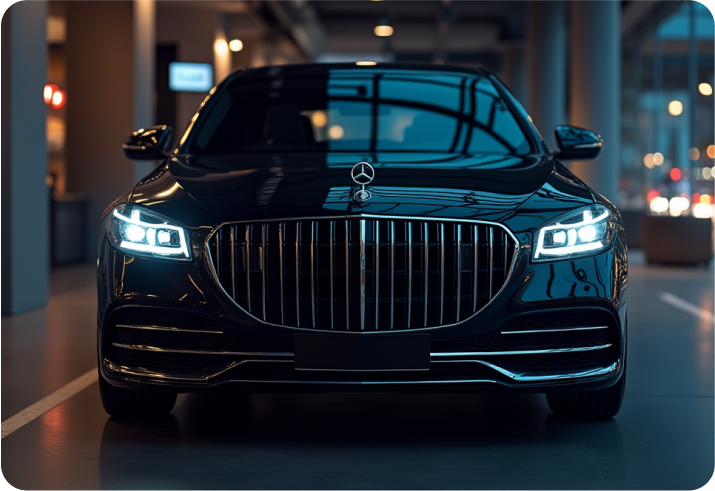An overview of electronic stability control

Electronic stability control is one safety element that is gaining popularity for newer vehicles (ESC). It would be really sensible to make sure your vehicle has ESC in it if you're seeking to buy a car and reside in a colder climate. When you're driving, your car's steering wheel can very suddenly and unexpectedly pull to one side. Electronic stability control is a safety feature that helps prevent this situation by detecting when this sudden pull occurs and then correcting the steering wheel back in the opposite direction. The ESC cars work by using sensors to monitor and check all steering movements, and when it senses a pull, it activates its motors to turn the wheels back in line.
When driving a front-wheel drive car or a rear-wheel drive car, the ESC helps prevent understeer and oversteer. When the roads are slick and turning is challenging in the winter, this is especially crucial. In order to prevent losing control of your vehicle while losing traction, ESC can sense when your automobile is losing traction and limit the throttle.
This blog post at Autobest will today brief you on all the major details about Electronic stability control.
What is ESC?
A feature found on many new cars, electronic stability control (ESC) technology is designed to assist drivers in maintaining control of their vehicles during hard-steering manoeuvres by controlling individual wheels’ braking power as necessary. ESC cars account for the "slip angle" of a vehicle and exerts pressure on the brakes at the slipping wheels to help keep them gripped to the road. While Electronic Stability Control in cars does not prevent rollover accidents, it is a highly effective tool in reducing vehicle accident hazards caused by loss of traction or loss of control, especially when roads are snowy or wet.
When is ESC activated?
The electronic stability program monitors your steering wheel and is designed to help you keep the car going where you want it to go. When the system notices that you’re not controlling the car as well as you could, it makes adjustments for you so that you can get back on track. The stability control system also comes into play when drivers in emergencies make sudden movements of the steering wheel. Well-intentioned drivers may oversteer or understeer during slippery road conditions or when hydroplaning in bad weather. This can happen even if the driver doesn’t mean for these things to happen, and these kinds of changes are a leading cause of single-vehicle crashes.
History of vehicle stability control system
The original version of ESC, known as traction control, was created by BMW in the late 1980s and utilised the engine control system to restrict torque when "stability critical" conditions were present. BMW created technologies that actively attempted to prevent these issues because it realised that drivers had a tendency to "overreact and lose control." The BMW system was created in collaboration with Bosch and Continental-Teves and installed on all 1992 BMW models, even the most affordable 3-Series (a vehicle priced similarly to many popular SUVs). Mercedes was heavily involved in ESC testing and development by 1992 with supplier Bosch. Technical articles that have recently been published discuss testing and show how ESC systems increase vehicle controllability. Early in the 1990s, manufacturers like Ford started looking at and developing ESC as well. They called their system Interactive Vehicle Dynamics (IVD).
Working of ESC
The stability system that coordinates the engine throttle and the wheel's brake is electronic. When you start your automobile, electronic stability program, like other driver aids, comes on. It also constantly monitors the steering wheel activity of the vehicle and measures its speed via wheel-based sensors. When sensors detect a loss of control by the driver, the stability control system instantly engages to compensate for the wrong steering. It uses the brakes on each of the car's wheels to return the vehicle to its intended course. If the driver applies too much throttle, ESC activates the traction control systems and adjusts engine power to lower speed, and applies the brakes. These maneuvers dramatically lower your chances of a rollover.
It's crucial to understand that traction control is not the same as electronic stability control. While traction control applies the brakes when your car starts to slide, ESC reacts significantly faster and has the ability to limit traction in all four tyres. The reduction of slippage is therefore improved by ESC. Although ESC is already standard on some high-end automobiles, you may also add it if your car doesn't have it. It would be a sensible choice to include it the next time you buy a vehicle, given how useful it is. It is hence important to have electronic stability control system in cars.
Operating ESC
To get your car's ESC to work, you don't have to do anything. When you start the engine, the vehicle stability control system starts monitoring steering and speed.
When the ESC detects that the driver is losing control of the vehicle, it activates. During a short loss of control, the system instantly modulates individual wheel brakes to help steady the car. When your electronic stability control activates, a warning light flashes on your dashboard. A warning light flashes on the dashboard when your ESC activates and makes adjustments. As the brakes are applied and the engine power is lessened, you may experience little jerks and lurches. Spin-outs can occur when drivers make excessively sharp and fast corners. When driving, reduce your speed and take turns slowly and cautiously. In dangerous driving scenarios, computerized driver aids such as electronic stability control might be beneficial.
Why ESC is important?
The ESC in newer, more modern cars can be a real help to the driver. Computers do think more quickly than people do, and they can detect a driver's skill. In a single second, it may adjust the suspension to control or maintain body roll and trigger a semi-locking differential for more traction. It can also take into consideration the present speed and road conditions.
When you are moving at a higher speed, the ESC Computer receives a signal from the car sensors that your reflexes is being slowed down. The ESC stiffens the suspension, initiates the rear diff to prevent slip, or transfers traction to the front axle in all-wheel-drive cars if you need to jerk the steering to escape anything on the route.
Basically, if your car has an ESC, you should drive it with the ESC off and push it to its limitations (without dying, of course), then select the ESC and repeat the drive, this time also driving it to its limits. You'll definitely see a change.
Pros of ESC
Electronic Stability Control (ESC) is one of the most significant safety innovations in automobiles today. This vehicle satbility control sytem helps drivers maintain control of the vehicle during extreme maneuvers or if they encounter a loss of traction while driving in adverse weather conditions. ESC automatically applies the brakes or intercede in the engine management in order to stabilize the vehicle if it senses that the driver has lost control. If it detects that the driver is losing control, it automatically applies these corrections to help stabilize the vehicle.
Cons of ESC
The Electronic stability control in cars on the whole, work well. However, other difficulties can arise:
-
If the brake linings in your anti-lock braking system are worn and there's air or dirt in your brake fluid, you might have trouble performing an emergency stop with the ESC.
-
ESC performance might be harmed by tyres that have worn tread or are in poor condition.
-
The ESC light might be triggered by a faulty brake light switch. This typical issue can be readily resolved with a low-cost switch replacement.
-
During high-performance driving, steering input may not always represent the intended travel direction. When ESC is engaged, it can intervene when it is not wanted.
If you’re looking for the best pre-owned cars, ABE is here with a wide range of luxury pre-owned car collections.

 By Admin
By Admin






